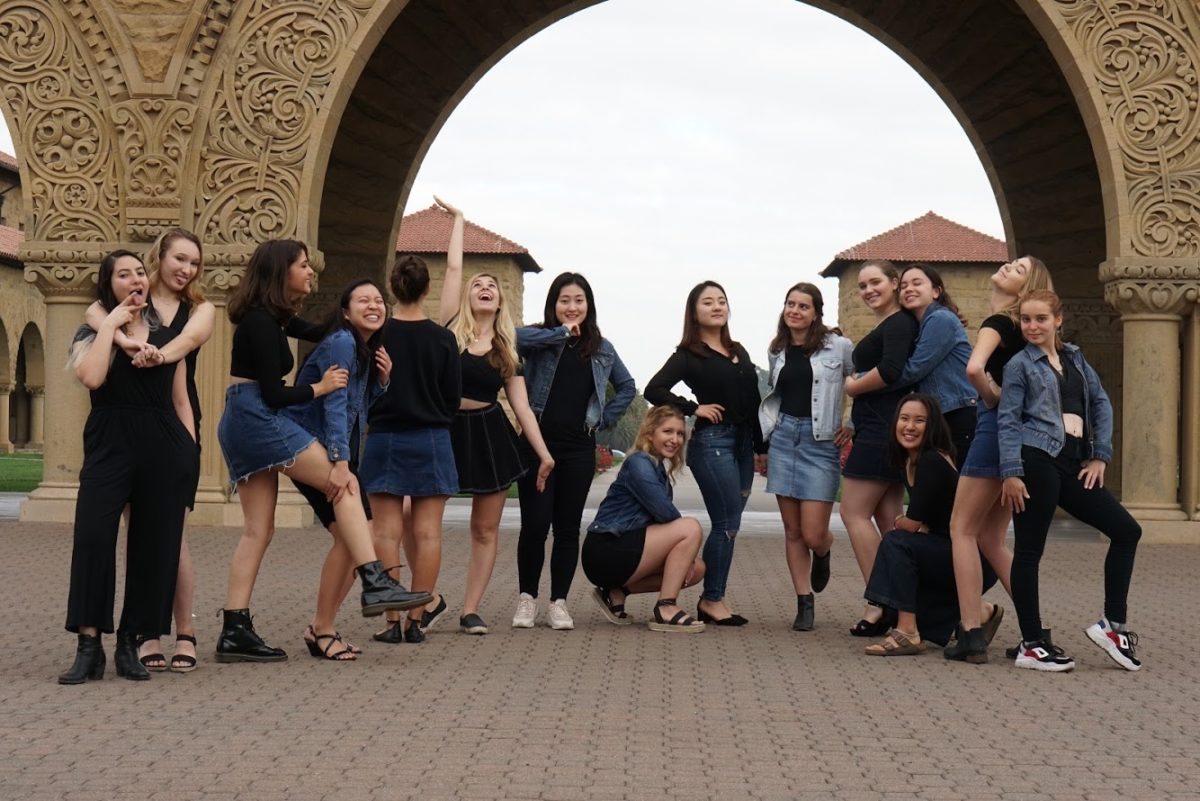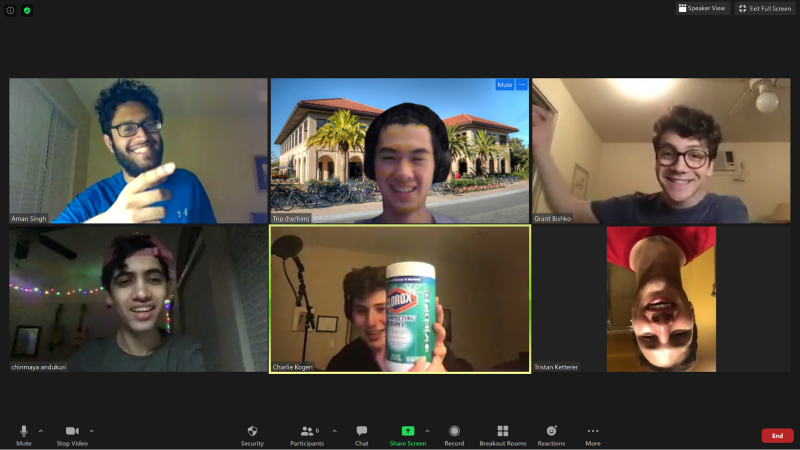“A New Way to Audition” reads the Stanford a cappella website. This year, instead of nervously making their way to Old Union for tryouts, those auditioning for a capella will be singing through a screen.
Back in July, Stanford a cappella started organizing. “A sort of shared calamity has brought us together,” explained Fleet Street musical director, Trip Master ’21. Representatives from all of the undergraduate a cappella groups chatted over Slack and Zoom throughout the summer to answer the big question: How do we do virtual a cappella?
They came up with a shared application portal that highlights each group on campus and lets students submit their virtual audition videos to whichever groups they choose. According to Master, there were two key priorities when designing the website: accessibility and fairness. A cappella groups wanted to make the application process as easy as possible, given the unusual circumstances, and they wanted to make sure that all a cappella clubs were being advertised equally. As Master explained, a shared portal is “the most equitable way to market,” because then any student looking into Stanford a cappella will be given information for all of the groups.
Equity amongst applicants was also a concern. “The new format challenges some people in unfair ways that they wouldn’t normally have to deal with in person,” explained Everyday People director, Kevin Martin ’22. “Namely the inequities related to recording and uploading audio and video.” With different signal and technology access, certain students could have better production strength in their audition tapes. However, groups have stressed that the strength of auditions will come from the vocals and personalities expressed, not from better quality videos.
“We are incredibly mindful of technological differences in this process,” said Marie Bland ’23, Talisman’s publicity manager.
Many groups felt motivated to host auditions for more than just practical reasons. A cappella clubs are often real cornerstones of the Stanford experience for their members, and Frankie Sperka ’23, Mixed Company assistant music director and performance manager, said that their group wanted to make sure they found the frosh “looking for a home in Stanford’s a cappella scene.”
Martin had similar sentiments for Everyday People, saying that they “wanted to ensure that incoming students and current students still had the opportunity to join the community if they would like to.”

One undergraduate a cappella group will not be accepting virtual auditions. Harmonics, known for singing alternative and indie arrangements, is part of the Stanford a cappella portal but will not be taking new members. While the group will still be active this year by competing in virtual competitions and doing recordings, Harmonics co-president, Lauren Ramlan ’22 explained that “it just wouldn’t be Harms” without being able to onboard and socialize with new recruits.
Almost every a cappella group on campus is worried about this social loss. During auditions, Stanford a cappella clubs often work very hard to connect with those auditioning.
“We normally get to hang out, eat and chat with auditionees during the various rounds of auditions to help them bond with us on a social level,” Martin explained. Throughout the year, the various clubs continue to bond into strong communities through social events and long rehearsal hours. In this virtual environment, groups are still “trying to foster some of that community,” said Testimony director, Calyx Liu ’21.
It is not all gloom and doom; some applicants are still incredibly excited to try out for a cappella. Soliman Aniss ’24 is trying out for Fleet Street this year and sees real benefits to this online process. Since he gets to do multiple takes of his audition video, he feels less nervous about singing in front of other people. Additionally, if he is accepted into the group, he is excited by some of the options for virtual creativity, like writing lyrics and experimenting with instrumental software. And Aniss is still excited for the social aspects, virtual or otherwise.
“I just like the idea of having a sense of camaraderie,” he said.
There are some concerns about audition turnout through the online portal. So far, groups have not seen applications come in at the rates they had hoped. Some worry that audition numbers will be lower this year due to the loss of in-person recruitment events, like tabling.
“I joined group X because they approached me at tabling” is a common sentiment in the Stanford a cappella community, according to Master. He is concerned “that activation energy is not there virtually,” so people may feel less motivated to audition.
Sperka shared similar concerns, noting that “it’s really hard online to show everyone who might be interested that this [a cappella] exists.”
There is still hope, though. Because the deadline for submissions is at midnight on September 18, Master suspects that some students, in typical Stanford fashion, may just be procrastinating.
Although virtual recruitment has been hard work, it has already had one tangible benefit: It helped breed more cooperation between the a cappella groups on campus. All undergraduate groups worked together to come up with the application portal and the plan for virtual auditions. Some believe that this teamwork is big progress for the a cappella scene on campus, and hope it will stay.
“I would love to see it [the portal] maintained long-term,” said Martin. “It is a really good way to foster community between groups.”
Despite the steps the clubs have taken to make auditions happen, there are more challenges yet to come. Singing over video calls isn’t easy due to lag and other connectivity issues, and there are Zoom fatigue concerns as well, so groups are deciding how to “optimize how you are using that time on Zoom” for rehearsals, Sperka said. A cappella clubs are using a myriad of solutions — cutting down rehearsal schedules, switching to independent work and utilizing small group practices — in order to deal with these unique issues.
No matter what Stanford a cappella looks like this year, or in the years to come, performers are motivated to keep their communities alive. Groups are turning to video production in various, creative ways. Testimony, for example, is looking at releasing shorter videos in order to keep listeners engaged, while the Mendicants are attempting to find a way to perform their annual fall alumni show through the web with student commentary sprinkled throughout.
“It’s something that we love,” said Counterpoint president, Emily Guo ’23. “So, we will find a way to do it — no matter what.”
Contact Kirsten Mettler at kmettler ‘at’ stanford.edu.
